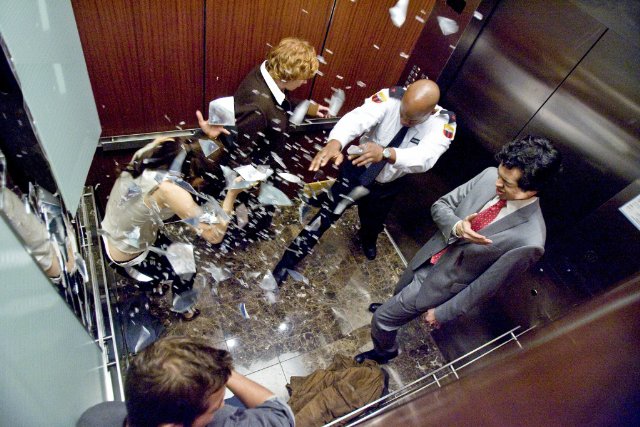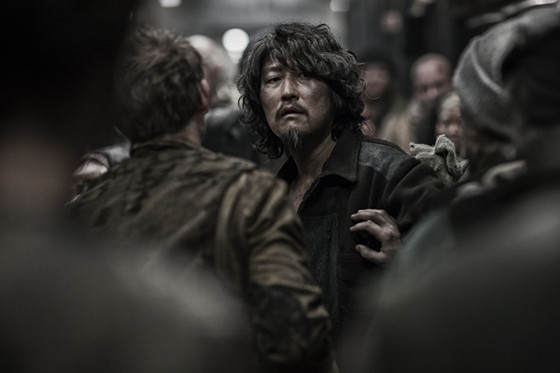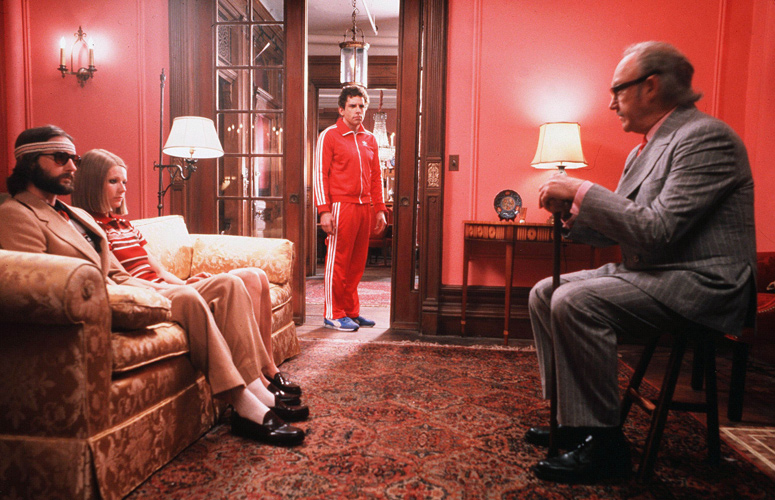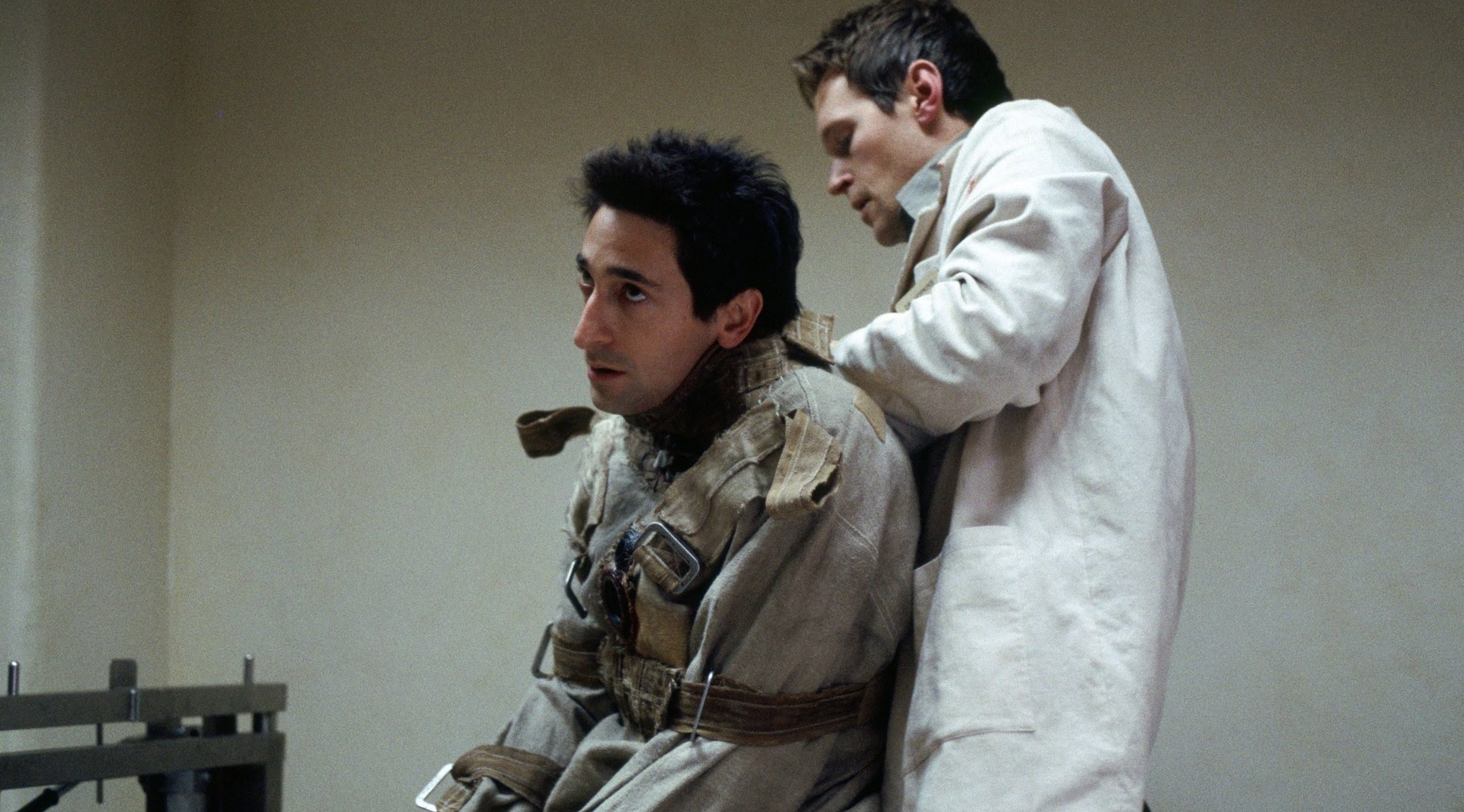5. Devil (2010, Dir. John Erick Dowdle)
“The road to Hell is paved with good intentions”, touts a famous saying. Certainly, after years of analyzing the many potential faces of abuse, verbal aggression have come to count as dangerous as some sorts of physical violence. When several strangers gather inside an elevator in this supernatural thriller, tensions are inevitably going to arise, and altercations will escalate from the intangible to the lethal.
The film doesn’t make much effort to convince the viewer that its situation isn’t silly or unbelievable, but it compensates in the form of credible dialogue and decent performances, delivering subtle lines in ways that don’t make much sense until later on.
With a narration of sorts, tales of a Hispanic grandmother regarding the Devil are woven across this 80-minute finger-biting suspense. Serving as the unifying motif, the disturbing bedtime stories give insight into what the fate of the elevator people will be, after it is noted through the security cameras that one of them is indeed Satan incarnate, according to one elder’s tales.
It is through this premise, that paranoia is left to run rampant and negativity takes hold of the stuck elevator like thick, indelible cloud. Sooner than later, the characters’ decisions will be what determines if the Devil triumphs, or if fate has a different ending in store.
Even if this plot doesn’t necessarily allow for a particularly lengthy movie, what this film lacks in duration, it makes up with a commentary on human behavior that takes as a parting point a battle between Good and Evil. Certainly, when enough humans are kept imprisoned in the same place for enough time, evil is bound to come out in some form or another.
And having an excuse for revenge is just the main reason why the Devil chose the specific people to be trapped in the elevator and survive. Those spoilers can be spared just to keep the illusion going indefinitely, but the following sentence cannot: “Don’t worry because if the Devil is real, then so is God”.
4. Dogtooth (2010, Dir. Yorgos Lanthimos)
In this scandalous Greek film, two parents manufacture spooky stories about the outside world in order to condition their children to stay inside the house and let the complexes that arise from interacting in close quarters take their effect.
Three siblings who act much younger than they are must power through the unusual circumstances their parents put them through, and this is the beginning of a story containing every conceivable form of abuse, transgressions and a general feeling of whatever a “normal” person would not desire.
In this decidedly bizarre film,extreme interactions are streched into extrapolations of the universally insane. The shock value stays consistent through the film’s flirtation with incest, animal cruelty, gore, and an otherwise quaint environment limited by a high hedge that borders an insurpassable fence, symbolizing the children’s inability to escape their confined upbringing.
The expectation of the unknown is what mainly drives the narrative of this bold production, which effortlessly creates an uneasy tone yet makes you want to know what happens next. The naturality with which the performances guide the actions only add to the uncanny valley generated by the enclosed world the characters live in.
3. Snowpiercer (2013, Dir. Joon-ho Bong)
In a tale of post-apocalyptic survival, a clash arises between the downtrodden, dirty have-nots and the steak-eating, powerful elite. All within a moving train that houses the last remnants of humanity.
Suffering lack and want, the poor subsist on a diet of gelatinous protein blocks, their only source of food, rationed by the brutal police, who are trigger-happy in their punishments delivered for any minor crime. The abuse of power is evident, and superiority in the shiny-clad higher class is preached by simple sentences comparing them to hats, and the lower classes to shoes.
The heat starts to boil when a transgressor, who only tried to take back his son, is punished by having his arm frozen through outside exposure and then shattered. While this happened, a speech is given to the “freeloaders”, belonging in the back of the train as per the sacred engine’s order.
Based on a suspicion that the police’s power was merely a bluff, the protagonists decide to start a revolt, using a tunnel system designed with the resources they could gather, this time avoiding the flaws that all previous revolts up to that point had had.
The sci-fi setting provides a rich world where this futuristic story develops, and the tone remains compelling while letting the viewer take in the many intricacies present in the locomotive universe where the film takes place. The interaction with the classes is masterfully conveyed and the performances shine through, aided with top-notch practical effects and an overall stellar production.
2. The Royal Tenenbaums (2001, Dir. Wes Anderson)
Stories of sheltered families usually become fruitful conversation pieces. And if you add a penchant for the eccentric that’s typical from Wes Anderson movies, you got yourself a formula for memetic preservation. This humorous, whimsical tale of a wealthy family that doesn’t know any better is sure to capture the heart of any cinephile who appreciates Anderson’s work.
Guided by an ensemble cast, this dry and quick-witted piece works with each actor’s talents and provides humor effortlessly while it holds its view that success is relative, and happiness is often the only captive when everything else is had and set free. The confinement isn’t necessarily what causes the characters to not see any views but their own. However, it plays a role in stunting their emotional development, and the family setting lends itself to sibling rivalry and bitter animosities across the quirky Tenenbaum family.
Able to brand memories with its fantastic scenes and colorful palette, this movie is a sure contender for fans of the strange, the sporty, the nerdy things and all sorts of vicissitudes present along Wes Anderson’s filmography.
The memorable “Needle in the Hay” scene, Pagoda’s character, intra-family lawsuits, Luke Wilson’s masterful tennis-playing, and the weird, crowded family house are safe bets for swayed emotions and lingering feelings of uneasiness, comforted by a sense that somehow everything can be alright after all.
1. The Jacket (2005, Dir. Jon Maybury)
Some movies can be based on sentences, used as a premise to guide the theme and narrative mechanisms. The Jacket lends itself to open interpretation, but its concrete story holds together its erratic tone and weaves its mismatched settings as one tapestry telling the stitching of an unraveled mind. Adrien Brody delivers a fine performance of a wounded soldier shot in the head and thrown into a time-travelling descent into madness.
Jack Starks just wants peace after fighting in the Gulf War, until he encounters a girl and her drunk mother who flings away his notions of reality and object permanence. Moving from the war, to snow, to a house, Jack starts to question what reality even is throughout the movie.
Suffering amnesia, Starks end up having a dead body beside him and police take him as the prime suspect, leading to a trial where he is found not guilty by reason of insanity and consequently put into a mental institution, which causes his real pain to materialize in the shape of him being put inside a straight jacket and placed inside a tight, dark, morgue-like space where, barely able to think, see, and even breathe.
His mind travels to 15 years in the future, where he meets and older version of the girl he met and a story of depression, addiction. and the healing power of love take place among destruction, insanity, blood, hate, and all sorts of negative emotions stemming from being confined in an impossibly small space. Going from perpetual darkness to eventual light, this movie serves as many things. Among those, a potential discourse of delayed gratification and overcoming addiction.
Sometimes a sentence can capture the essence of a film. “Just because you’ve never seen the light doesn’t mean that it doesn’t exist”. Sure, that argument can be made about basically anything, but when used correctly in a well-delivered tone, it can be very powerful and effective for regaining hope. And cinema itself, surely, represents hope to many people.
Author Bio: Edgar C. Mans is an experimental product of multiple nationalities, several languages, many cultures and genetic mutations. A film student and writer at heart, Costa Rican-Panamanian Edgar strives to make a better world, and when he fails, he settles for being a more comfortable and adaptable creature in any given environment.




